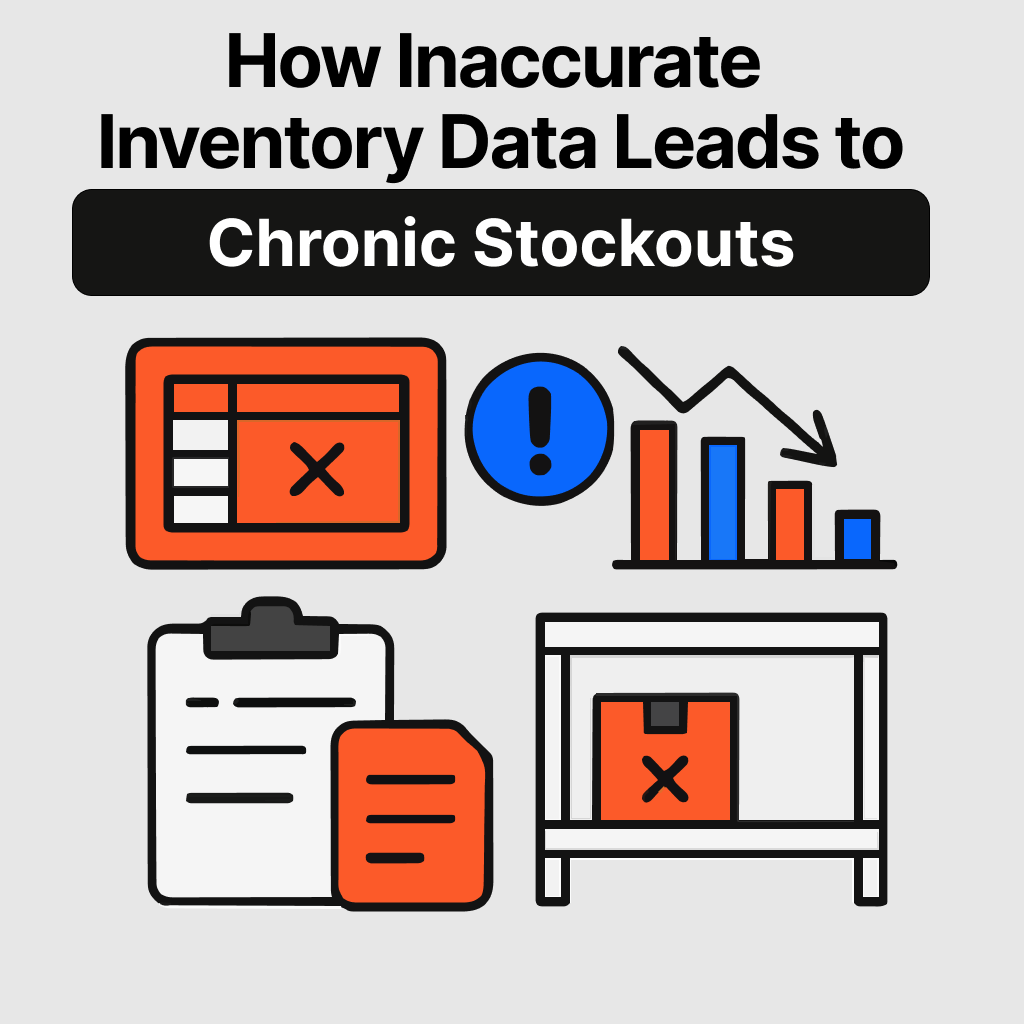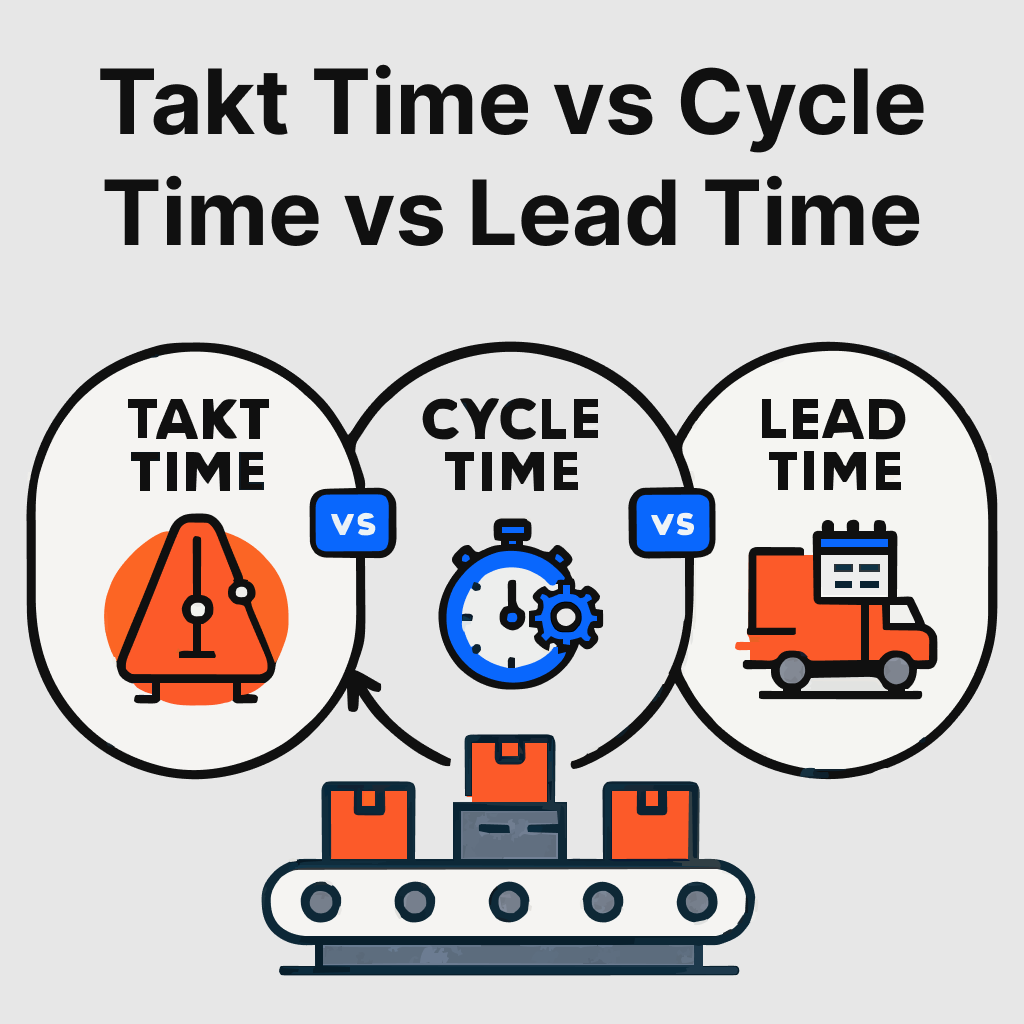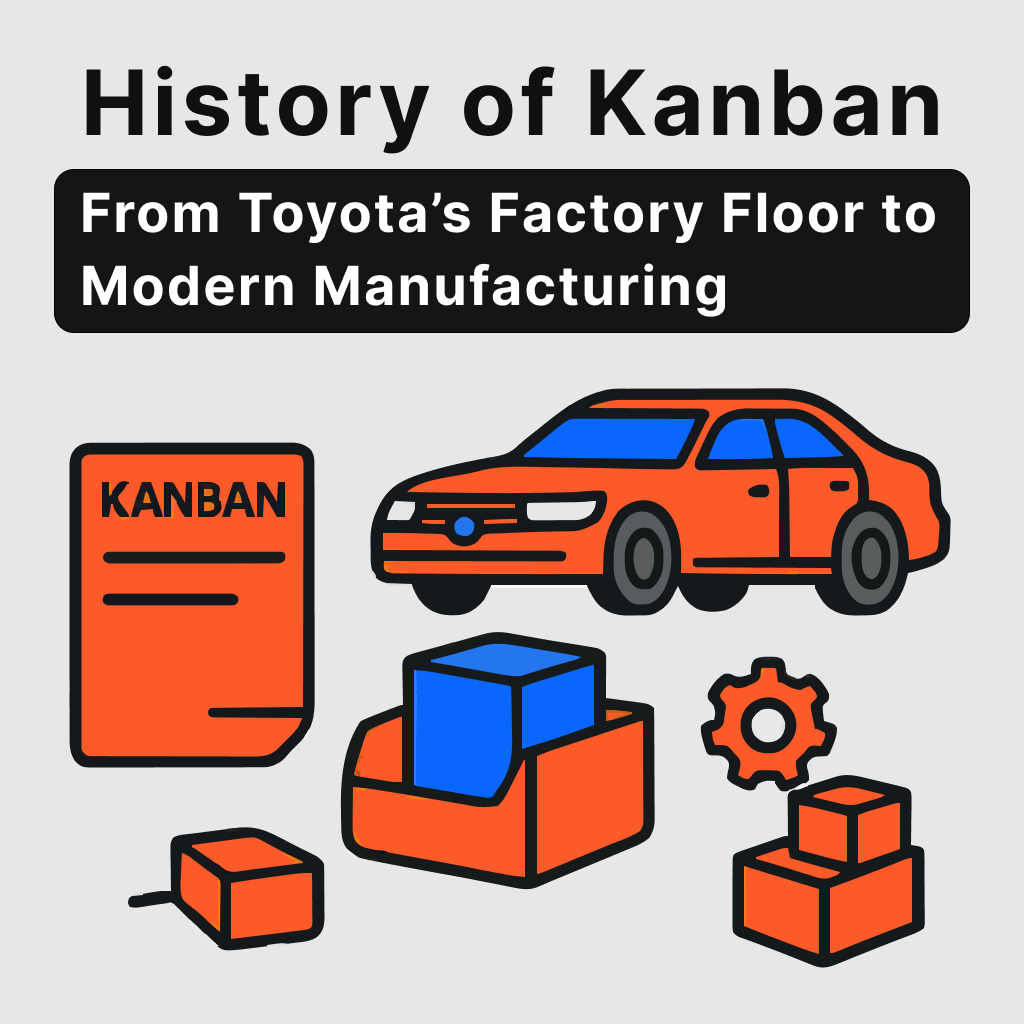Imagine this all-too-common scenario: your production line grinds to a halt. Not because of a machine breakdown, but because a critical component – one your system swore was in abundance – is nowhere to be found. Or perhaps you've just promised a key client a delivery date, only to discover a crucial raw material is back-ordered, throwing your entire schedule into disarray. Sound painfully familiar?
For manufacturers, these aren't just minor inconveniences; they're chronic stockouts, and they represent a silent, insidious threat to your operational efficiency, customer satisfaction, and ultimately, your bottom line. While many blame supply chain volatility or sudden demand spikes, the surprising truth is that a vast majority of these costly disruptions stem from a more controllable, yet often overlooked, culprit: inaccurate inventory data.
This isn't about blaming a single department or a specific software. It's about understanding how deeply flawed data permeates every decision point, creating a vicious cycle of reactive management and lost opportunities. But here's the critical insight: by identifying the root causes of these data inaccuracies, you hold the key to unlocking unprecedented operational precision, boosting profitability, and fortifying your manufacturing business against future disruptions.
Get ready to uncover how your inventory data might be silently sabotaging your success and, more importantly, discover the proven strategies to reclaim control and build a resilient, data-driven manufacturing operation.
Why Accurate Inventory Data Is Critical For Manufacturers
Your inventory data serves as the foundation for every critical production decision as a manufacturer. When this foundation is shaky, the entire structure of your operations becomes unstable. The consequences ripple through every aspect of your business, from customer satisfaction to your bottom line.
Think of inventory data management as the nervous system of your business. Just as your body relies on accurate signals from your nervous system to function properly, your business depends on precise inventory information to operate smoothly. When these signals are corrupted, the entire system suffers.
The most successful businesses understand this fundamental truth: exceptional inventory management starts with exceptional data quality. They've discovered that investing in accurate inventory data isn't just an operational necessity – it's a competitive advantage that drives sustainable growth. These companies have moved beyond reactive crisis management to proactive optimization, and you can too.
Common Sources of Inaccurate Inventory Data
Let's explore the most common culprits behind inaccurate inventory and understand why they're holding your business back from reaching its full potential.
Manual Inventory Tracking and Human Error
Manual inventory tracking might seem cost-effective or easier than implementing an inventory system initially, but it's actually one of the most expensive mistakes you can make. Human beings are incredible at many things, but maintaining perfect accuracy in repetitive data entry tasks isn't one of them.
Every time someone manually counts products, enters numbers into a system, or updates stock levels by hand, there's an opportunity for error. Simple mistakes in entering numbers can lead to significant discrepancies between recorded and actual stock levels, and as businesses grow, manual tracking becomes increasingly unmanageable and prone to errors.
Consider the typical warehouse environment where your team is rushing to fulfill orders, answer phones, and manage incoming shipments simultaneously. In this fast-paced setting, even your most dedicated employees will occasionally miscount items or enter the wrong numbers. These small errors compound quickly, creating significant discrepancies between your recorded and actual stock levels.
The challenge becomes even more complex as your business grows. Manual inventory tracking simply doesn't scale, and attempting to force it often leads to increasingly frequent stockouts and customer disappointment. The lack of real-time updates means the data is often outdated by the time it's used for decision-making, creating dangerous blind spots in your operations.
Spreadsheet Inventory: A Scalability Nightmare
Spreadsheet inventory management often starts as a practical solution for small businesses, but it quickly becomes a bottleneck that limits growth potential. While spreadsheets are familiar and seemingly flexible, they create serious problems when used for inventory data management.
The most significant issue with spreadsheet inventory systems is their lack of real-time data updating capabilities – the information is only as current as the last manual entry, which could be hours or even days old. This time lag creates dangerous blind spots in your inventory data. You might make purchasing decisions based on yesterday's numbers while your actual stock levels have changed dramatically throughout the day.
Spreadsheet inventory systems also struggle with multiple users and locations. They are not easily scalable and struggle with large datasets and multiple locations, making it difficult to get a holistic view of inventory. Version control issues arise when different people work with different copies of the same file, leading to conflicting information and confused decision-making.
Integration challenges compound these problems further. Modern businesses operate across multiple sales channels – physical stores, e-commerce platforms, marketplaces, and wholesale accounts. Spreadsheets cannot be easily integrated with other business systems like Point-of-Sale (POS) or e-commerce platforms, leading to data silos that make accurate inventory management nearly impossible.
ERP Systems: Outdated, Expensive and Hard to Use
Even businesses that have invested in Enterprise Resource Planning (ERP) systems can struggle with inaccurate inventory if their technology is outdated or improperly configured. Legacy ERP systems often create more problems than they solve, particularly when it comes to modern inventory data management needs.
Older ERP systems frequently operate with data silos, where information is stored in separate, non-communicating databases. Your warehouse team might have one set of inventory numbers, while your sales team works with completely different figures. This fragmentation makes it impossible to maintain accurate, unified inventory data across your organization.
Integration limitations present another significant challenge. Legacy systems struggle to integrate with modern technologies, such as e-commerce platforms, which can lead to a disconnect between online and offline inventory records. This forces businesses to rely on manual data transfers that introduce errors and delays.
System performance issues also impact inventory data accuracy. Slow processing times and frequent crashes can delay critical updates, leaving your team working with outdated information. When your system can't keep pace with your business operations, the resulting data gaps create perfect conditions for stockouts.
The Vicious Cycle: How Poor Data Creates Persistent Problems
Understanding the mechanics of how inaccurate inventory creates chronic stockouts is crucial for breaking this destructive pattern. The process follows a predictable sequence that, once started, tends to perpetuate itself indefinitely.
Inventory and Demand Forecasting Failures
Effective demand forecasting requires accurate historical data, but when your inventory data is consistently wrong, your forecasting becomes unreliable. Poor historical data results in unreliable demand forecasting, with businesses often underestimating customer demand and leading to insufficient stock orders.
This forecasting failure creates a planning problem where you consistently order insufficient quantities. Each stockout reinforces the pattern, as missed sales opportunities aren't captured in your sales data, making future demand appear lower than it actually is.
The Phantom Inventory Problem
One of the most insidious effects of inaccurate inventory is phantom inventory – products that appear to exist in your system but aren't actually available for sale. When the system shows more stock than is physically available, it prevents timely reordering and creates a false sense of security.
Phantom inventory often results from unrecorded shrinkage, theft, damage, or simple counting errors. When your system believes you have adequate stock, it doesn't generate purchase orders or alerts. Meanwhile, your actual inventory dwindles until you face an unexpected stockout that catches both you and your customers off guard.
The Reactive Management Trap
According to a 2004 HBR study 72% of stockouts for retailers stemmed from avoidable planning issues like reliance on legacy systems, human biases in ordering and decentralized inventory control. Inaccurate inventory forces you into reactive management mode, where you're constantly responding to crises rather than preventing them.
This reactive approach is not only stressful but also expensive. Emergency orders typically cost more due to expedited shipping fees and premium pricing from suppliers. You lose negotiating power when you need products immediately, and your suppliers may struggle to accommodate last-minute requests.
%201.svg)








.svg)














.svg)
.svg)

.svg)